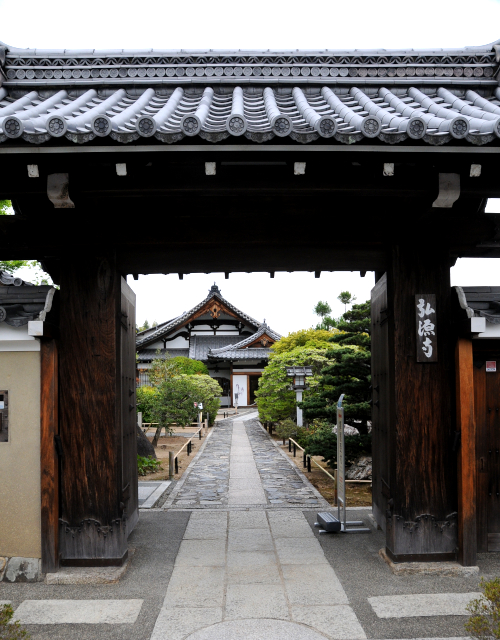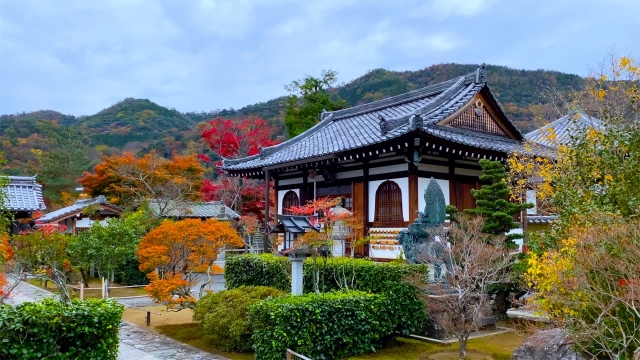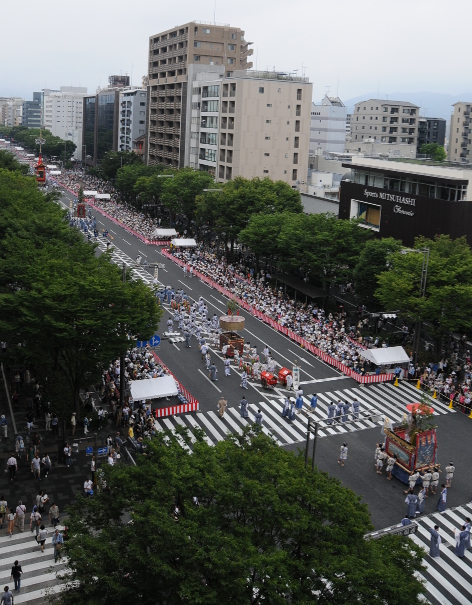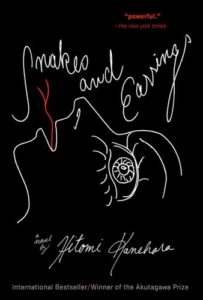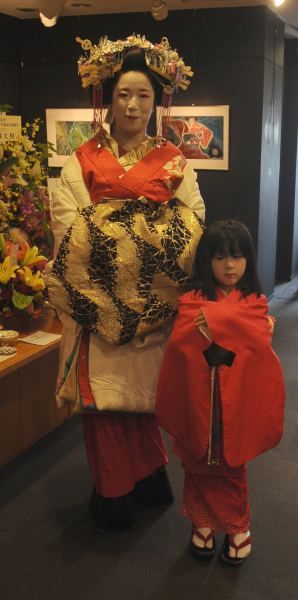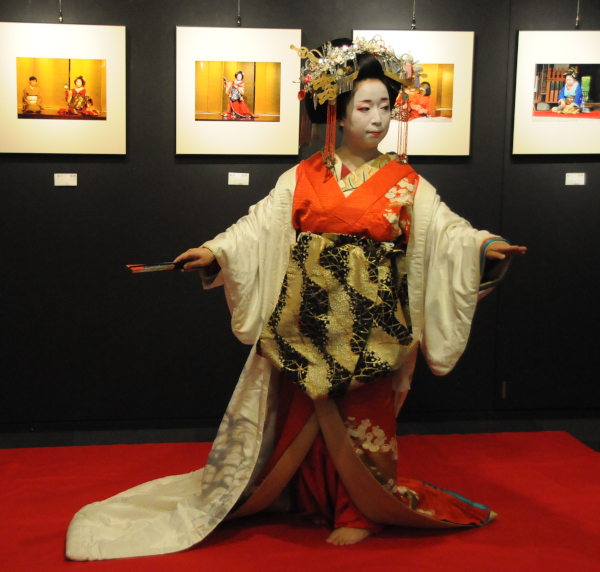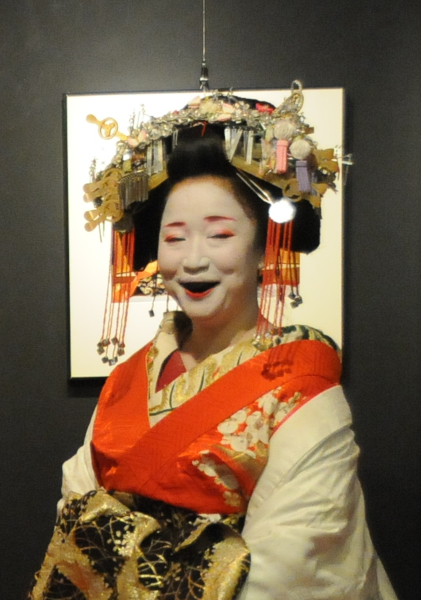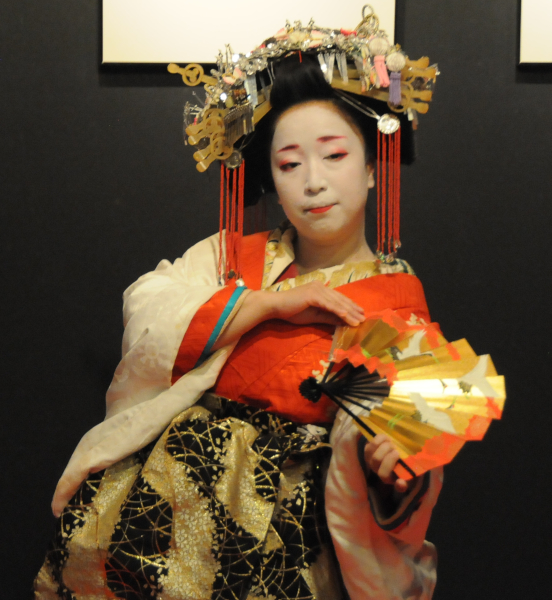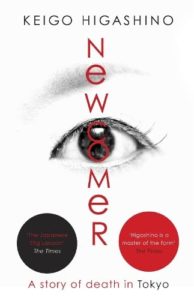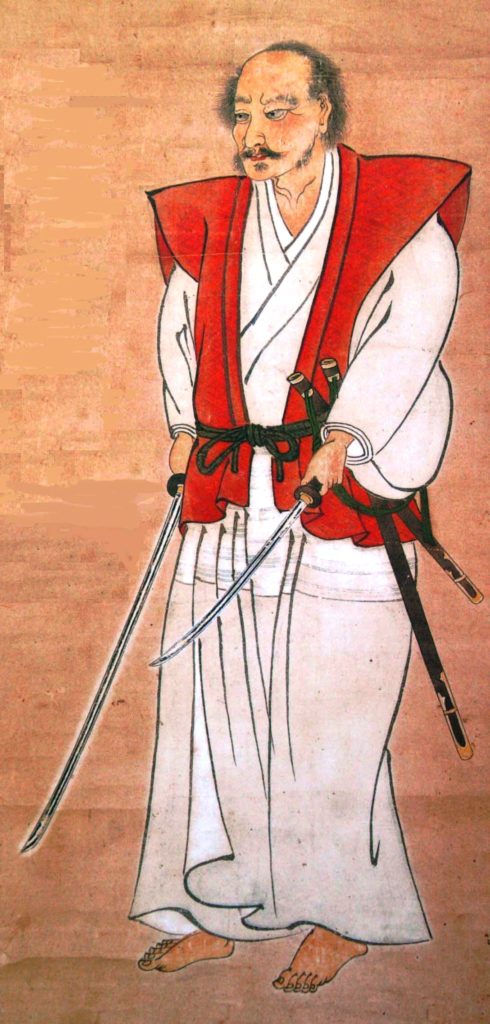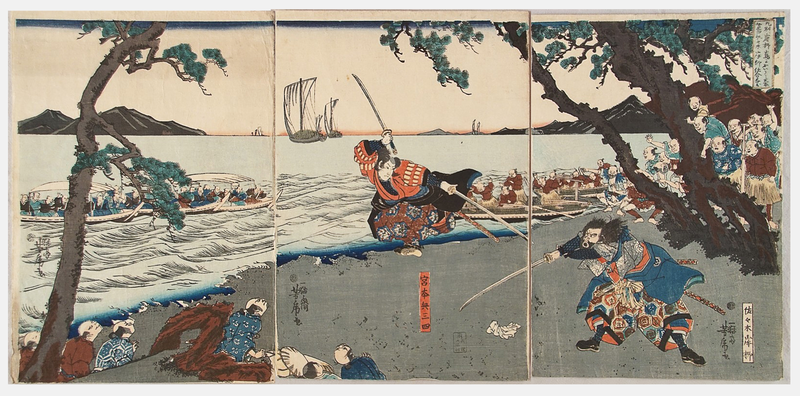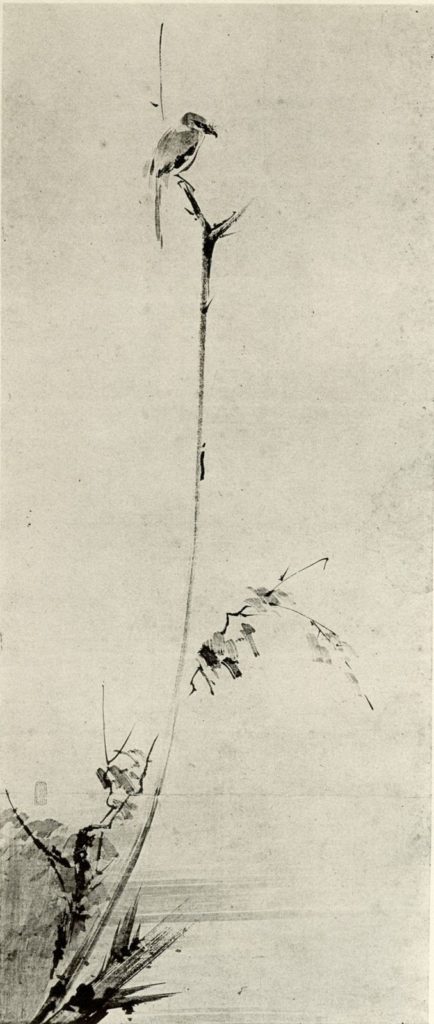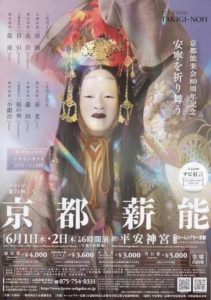This is one of the 24 subtemples of Daitoku-ji, one of the headquarters of a branch of Rinzai Zen Buddhism. Soken-in dates back to 1583, when it was established by Toyotomi Hideyoshi as the mortuary temple for Oda Nobunaga, who dies one year earlier in what is known as the Honno-ji incident.

Soken-in’s main hall holds a lacquered statue of Nobunaga that was created at the temple’s founding. The seated lord is 115 cm tall and wears ikan-taito courtdress. He looks down upon visitors with inlaid eyes and has a somewhat haughty expression on his face.
At the back of the temple lie the graves of Nobunaga and some of his sons and family members, or rather: one of Nobunaga’s “graves”. After he had committed suicide at Honno-ji in 1582, the temple was burned to the ground and destroyed the body. Thus unable to properly cremate his lord, Hideyoshi had two life-sized statues made from agarwood. One of the statues is the one mentioned above, the other was cremated in lieu of Nobunaga’s body and put into the grave at Soken-in. Agarwood is very fragrant, and contemporary sources tell how the smell from the burnt wood hung over Kyoto for days. To this day, there is a grand Buddhist ceremony on June 2nd, the day when Nobunaga died.

As can be surmised from the fact that Soken-in has no less than 3 tea houses, there is a strong connection to tea ceremony as well. The founding abbot, Kokei Sochin, was the Zen-master of Sen-no-Rikyu, who is revered as the one who perfected tea ceremony as we know it today. Coincidentally, Rikyu’s own mortuary temple, Juko-in, is just next door. In 1585, Hideyoshi held one of his large tea gatherings in Soken-in, where he prepared tea with his own hands. And there is also a chasenzuka, a memorial mound for tea whisks. Sadly, the yearly ceremonies to give thanks to used tea whisks were stopped already before the pandemic and are unlikely to return.

Unfortunately, many of the temple’s buildings are not original. After the Meiji Restoration of 1868, there was a movement to abolish Buddhism, and many of the buildings were destroyed, and only restored in the 1920s; the main hall being from 1928. This gives the temple, especially its front garden and the grave site, a modern, almost cold appearance.

Nevertheless, there are still original features from the 16th century, and they can be found on the temple’s boundaries, literally. The main gate dates back to 1583, as well as the beautiful bell tower that lies just outside the precincts and is an Important Cultural Property. In contrast, the earthen wall surrounding the temple doesn’t look extraordinary at all. However, it is in fact two walls built next to one another with a hollow space in between and a roof on top. This unusual construction has earned it the name “mother and child wall”.

So, is Soken-in worth a visit? I think Nobunaga’s statue is beautiful, and if it’s true that it resembles him closely, it is interesting to see. But since the buildings and grounds are fairly recent, and there is o typical Zen garden, Soken-in lacks this peaceful ambience I am looking for in a temple. The tea houses are nice too, but overall, Soken-in is not the most picturesque temple of Daitoku-ji.
It’s getting a bit late here, so I’ll add pictures tomorrow. 😉

